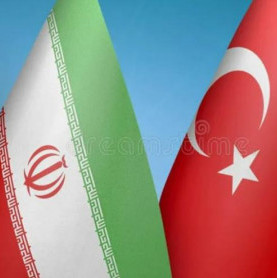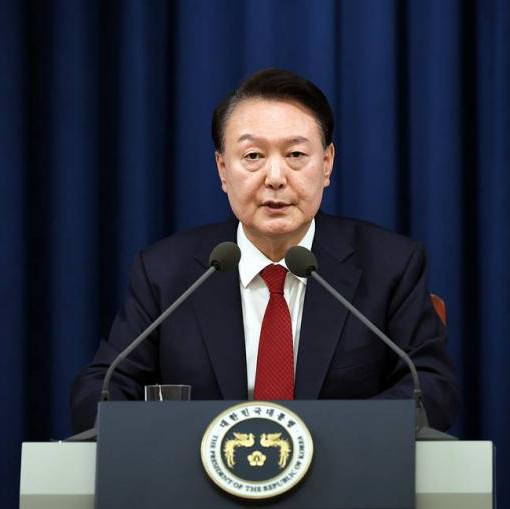
Over the last few days, European officials across the board have been engaged in an intensive dialogue on further assistance to Ukraine. And they do have something to worry about. Someone, to be more precise.
On December 18, the European Commission (EC) transferred to Kiev another tranche of €4.1bn from the European Support Fund for Ukraine, bringing the volume of loans along the line to €16.1bn. I’d like to note that the Fund's scope of finance is €50bn tailored for 2024-2027. With almost a third already spent, the rest will be unlikely sufficient for the period outlined. Moreover, EU estimates suggest that G7's pledged €50bn loan will only be enough until late 2025, of course if Trump "does not revoke" the American contribution of €20bn. Apart from that, Donald Trump's second POTUS term has threatened the EU with new issues on security, trade, and trade ties with China, each of which will require additional costs. All of this is alarming to European officials, and they are intensively looking for ways to convince Trump that Ukraine should only start negotiations from a position of strength, while discussing proposals on how to persuade him to "dive into cookie jar." After all, it will take a lot to "compensate" for in case of failure as the Biden administration’s volume of military aid to Ukraine alone has exceeded $62bn.
Scenarios were discussed on December 12 at a foreign ministers’ meeting of key EU countries, Great Britain and Ukraine in Berlin, then in Warsaw at a meeting between Polish Prime Minister Donald Tusk and French President Emmanuel Macron. As a result, intent was announced to step up military, economic and financial assistance to Ukraine and provide it with firm security guarantees, including long-term military and financial support, i. e. willingness to proceed with the "Ukraine first" course.
Notably, European politicians have come up with these brave statements amid Europe’s deteriorating economic situation. So, December 13 saw the German Bundesbank lower its forecast for 2025 and warn about potential consequences of a trade war that could be initiated by the United States. It estimated that Europe's GDP, excluding possible US restrictions, would only grow by 0.1% next year, making the economy stagnate. And if Trump follows through on his threats and imposes a 10 percent tariff on European goods and a 60 percent one on Chinese exports, a decline in GDP will follow. Meanwhile, the European economy has already lost competitiveness as compared to those in America and China due to Brussels' decisions regarding Russian gas, oil, and coal. The import of expensive US LNG, which has almost replaced Russia’s in terms of volume, does not allow Europe overcome the energy crisis and support energy-intensive industries that used to be the most competitive. And a more than 10 percent reduction in investment, although this is not surprising because European corporations have been noting a decrease in business profitability, indicates prospects disappointing to European industry. Local entrepreneurs are currently "voting with their feet" by opening new businesses in the United States or Asia. The former has been moving away from its European allies and starting to compete with them, while China is reducing imports and becoming an increasingly serious rival even in the European market.
The leading European countries, Germany and France, are suffering the most. The GDP of Germany, Ukraine's major European sponsor, is projected to fall by 0.6 percent. Let’s note that its economy has already shrunk by 0.5 percent over the past two years. In the recent years, the United States has been the main consumer of German exports (10 percent, the highest level in more than two decades). As estimated by the Munich-based Ifo Institute, if Trump imposes the promised tariffs, German exports to the United States and GDP could fall by 15 percent and one percent respectively. Automakers and pharmacists will get a particularly hard blow because the United States accounts for 13 percent of Germany's foreign car sales and 22 percent of pharmaceutical exports.
Problems are also growing in the region's second largest economy, France, with financial problems added to industrial ones. Back in early July, French Economy Minister Bruno Le Maire warned that the country could plunge into financial crisis if the high-spending and high-tax political program adopted by the election winner leftist New Popular Front alliance was implemented. Moreover, France is much more dependent on "foreigners" than its G7 counterparts. In 2023, they accounted for about 50 percent of the French financial market, which is a lot more than in Italy (30 percent), the United Kingdom or the United States, the IMF claims. If investors avoid French government bonds, there will be a significant increase in spreads. As a result, the current political instability may provoke a debt crisis not only in France but throughout Europe. And this, in turn, would exacerbate discord within the EU, including on further support to Ukraine. The budget cuts that are inevitable in this case will undermine the governments’ remaining support.
So, raising more money for Kiev is no easy feat in the current conditions. And European officials have started exploring options for where to get them. One idea is to provide Kiev with a loan at preferential rates and with longer repayment periods. Another is to expand the EU's ability to borrow against guarantees from individual countries. Yet another is to use the European Stabilization Mechanism (ESM) with its loan potential of €422bn (the previous attempt to use it during the pandemic failed: none of the countries were tempted by cheap cash). Finally, there is one more option discussed — to exploit unused money from the NextGenerationEU fund that was created to recover from the pandemic and develop a "green economy". It currently has some €390bn but expires in 2026.
The key challenge in the context of implementing these ideas is that all the options are politically difficult, requiring consent of all the 27 national parliaments, and the bloc does feature opponents of boosting aid to Ukraine at their expense. Moreover, seven EU members have an excessive budget deficit, and money is needed to meet defense spending standards. There are only €5bn left in the current EU defense budget; the new one will only come into effect starting 2028 and is unlikely to solve today's problems. Besides, increased support for Ukraine will require new arms purchases from the United States, though it is planning to reduce its contribution, which will cause discontent in a number of European countries.
But if none of the options listed above is accepted, Europe will have to "cut out" necessary funds from its own budgets. And this may raise discontent with both businesses and the population. Thus, the current "Ukraine first" course by European bureaucracy will increasingly conflict with both Trump's "America first" principle and interests of European businessmen and ordinary people. Whether this will force local bureaucrats to take a more sensible stance in order to stay in power is anyone’s guess.









